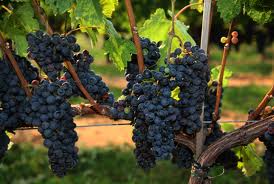
1987 D’ Yquem
In 1993 on an extensive visit to some of the most legendary and iconic wineries of Europe I visited Chateau d’Yquem in Sauterne and bought some of the 1987 vintage which has slowly been maturing, waiting for the perfect moment to be enjoyed. The wine certainly honored expectation and the 26 years of patience.
Chateau d’Yquem is a legendary Premier Cru Supérieur or Superior First Growth wine from the Sauternes in the southern part of Bordeaux. In the Official Bordeaux Classification of 1855, it was the only Sauternes given this rating to recognize its superior standing amongst its peers. It is known for its longevity, unique taste, ancestry and high prices but ultimately it is the essence of the alchemy between the grape and the magic woven by the threadlike mycelium of the little fungus called Botrytis cinerea, or noble rot. Although understood by science, analysis of the unique flavours created very slowly first in the vineyard, then in the cellar and ultimately in the bottle remains illusive. It unfolds its secrets to those who take the time to listen and experience its wonder.

Chateau d’Yquem and Vineyard

Botrytis Cinerea on the Bunch
It takes a strong mind to leave your grapes on the vine until they turn into disgusting-looking, mouldy raisins by alternate climatic heat and misty dampness synchronized to create the afore-mentioned fungus. The grapes will all ‘rot’ on the bunch at different rates, so pickers have to pick berry by berry with little scissors into a little wooden basket and might need to comb the vineyard up to 10 times. The yield from these dessicated grapes will be a small fraction of that yielded by healthy red or white berries, therefore only about 20 or so top ranking properties can afford the luxury of producing top quality of this sweet nectar every vintage. They might produce only tiny quantities or in some years nothing at all.
 Fine Sauterne has an unctuous richness with honey, crème brulée and a mélange of glace pineapple, ginger, butterscotch and floral flavours with a counterbalance of freshness which lifts the concentration and sweetness and prevents overly heaviness. This combination gives these wines, from good years, almost eternal life. Fruity tones fade into delicious secondary and tertiary flavours with age, reminiscent of a faded silk tapestry of great beauty and lustre.
Fine Sauterne has an unctuous richness with honey, crème brulée and a mélange of glace pineapple, ginger, butterscotch and floral flavours with a counterbalance of freshness which lifts the concentration and sweetness and prevents overly heaviness. This combination gives these wines, from good years, almost eternal life. Fruity tones fade into delicious secondary and tertiary flavours with age, reminiscent of a faded silk tapestry of great beauty and lustre.

Bottled in 1787
In July 2011, an 1811 bottle of Château d’Yquem sold for £75,000 ($117,000) at the Ritz in London to a private collector, Christian Vanneque, to become the most expensive bottle of white wine ever sold.
The Chateau d’Yquem vineyard consists of 126 hectares in the Sauternes appellation, though only 100 hectares are in production at any time and plantings consist of 80% Sémillon and 20% Sauvignon blanc. The proportions are close to equal in the final wine because of the greater crop from the Sauvignon Blanc.
The château was run by Comte Alexandre de Lur-Saluces, after the death of the Marquis Bernard de Lur-Saluces in 1968. He ran it as a family property until 1996. Sadly a family feud ended the family tenure when some members sold 55% to the French luxury goods LVMH Moët Hennessy – Louis Vuitton paid about $100 million. The Comte remained until 17 May 2004, when he retired and was replaced by the well-respected, current managing director of Château Cheval Blanc, Pierre Lurton.

Perfect maturation in d’Yquem Cellar
The grapes are pressed three times and transferred to oak barrels to ferment and mature for a period of about three years. In some poor vintages no d’Yquem is bottled – this happened nine times in the 20th century: 1910, 1915, 1930, 1951, 1952, 1964, 1972, 1974, and 1992 and in the 21st century one time: 2012.

The empty vessel
Younger Sauterne should be chilled to around 6 ºC and older wines can be served warmer at around 10 to 11ºC. The 1987 was a very good – if not spectacular – year and the wine had acquired the deep amber glow of burnished copper. It glugged lazily into the glass and the enticing nose of toasted nuts, vanilla cream and soft orange marmalade followed through to the palate. The silky, mouthfilling essence glided over the tongue reminiscent of melting butter and honey with complex flavours of glace apricot, pineapple, peach, smoky sandalwood and praline lingering for an eternity. Full-bodied, unctuous with perfectly balanced acidity giving wings to the complexity. It lingered dreamily, unfolding still more treasures, finishing seamlessly with perfect precision.





























